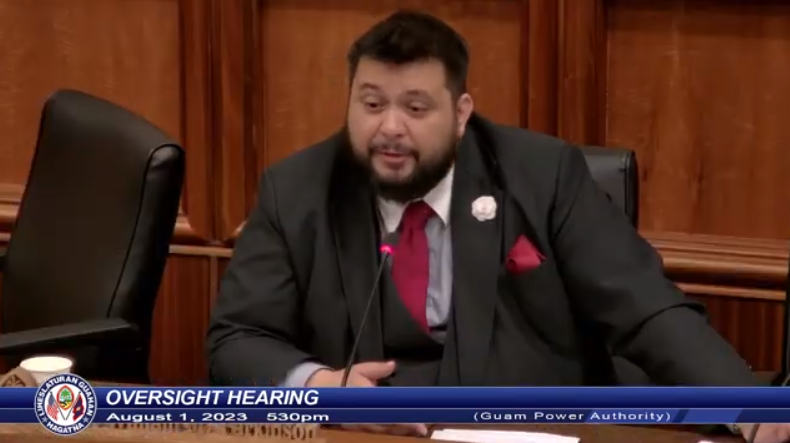Guam Power Authority: Current generation capacity is very vulnerable

The lack of power was high on the list of consumer complaints in the aftermath of Typhoon Mawar.
But senators held off on calling in gpa officials until restoration efforts were well in hand.
Last night lawmakers held an oversight hearing to finally get an update on the state of the island-wide power system.
There were two main issues that placed gpa on the public hot seat since the storm: the protracted repair of downed transmission lines despite the transition to more than 90 percent concrete poles.
And the state of generation capacity, whereas of late load shedding has returned.
Guam Power Authority General Manager John Benavente said the current scheduled outages are due to a boiler tube leak at the Cabras 2 baseload unit last weekend. And it's expected to be back online by Saturday.

"The most critical period of time is between now and when Okkodo is completed so therefore we are thinking we are trying to come up with solutions," he said.
The solutions include repairs to the 20-megawatt Yigo turbine, and asking large customers such as hotels to crank up their generators when peak demand exceeds capacity.
Benavente said customers can help too. And it could be as simple as turning off water heaters during peak hours
"We have about 30,000 homes on the island, you take half of that, 15,000 homes times 2 kilowatt is 30 megawatts," he said. "See what I mean?
Meanwhile, oversight chairman, Sen. Will Parkinson raised what many customers post-storm were complaining about.

"And you also testified that this was the fastest recovery we've ever had, is that accurate? Is there no recovery that has been faster than this? No recovery of 150-mile-per-hour winds was ever faster than this," he said. "That's my testimony. You can have a recovery like Dolphin when we were back in two or three weeks but that was less than 100 miles per hour."
Parkinson also asked, what about an underground system.
Benavente said they're looking into what would be a $2.3 billion to $ 7-billion investment.
"Back then nai a concrete pole system is three times that of a wooden pole system, an underground system is ten times more than a concrete pole system," Benavente said.
Still, he defends his team's response.
"In no uncertain terms in my mind was this not the fastest recovery and I'm very proud of the men and women of GPA for all the work that they have done and also for those that came in to help us," Benavente said.
See the schedule of rotating outages:

